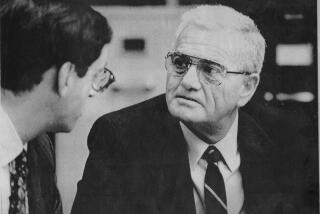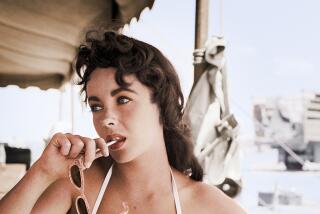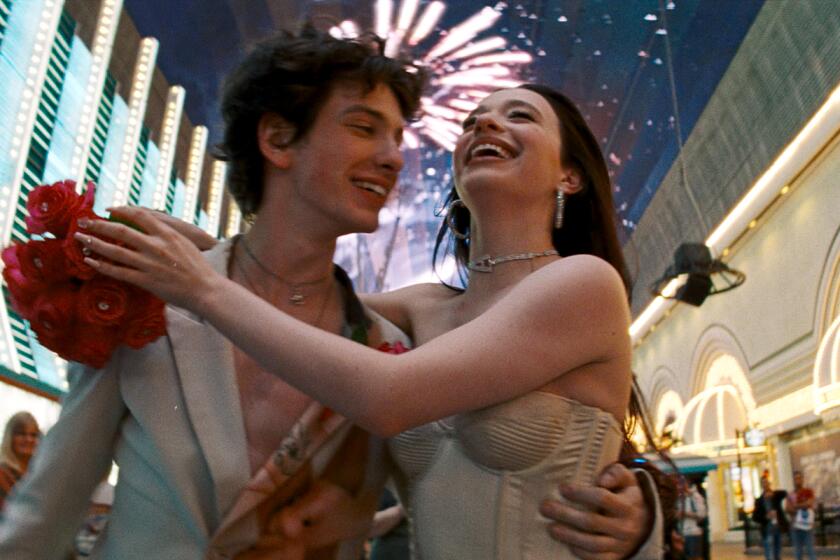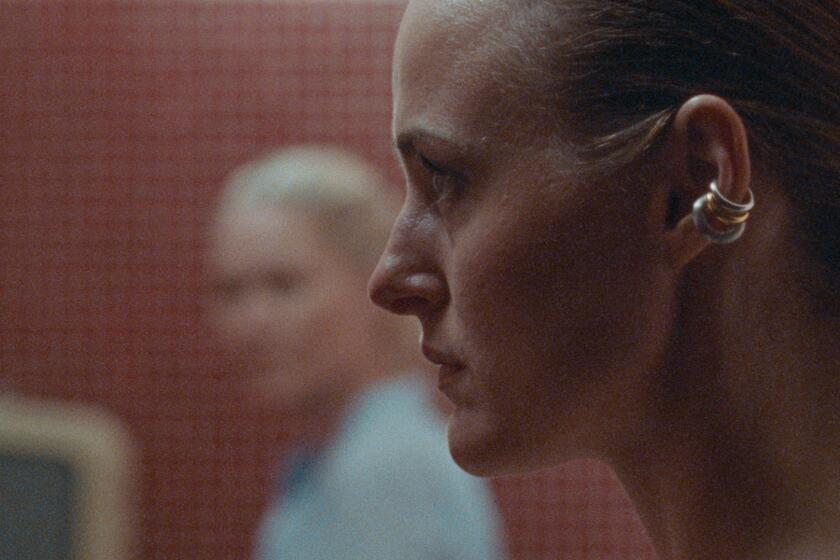The Silent Treatment Ends for Actress Florence Lawrence
- Share via
Before there were Mary Pickford and Lillian Gish there was Florence Lawrence, the very first movie star.
As the film industry emerged in the first decade of the 20th century, producers did not list the names of their actors for fear of giving them a bargaining chip in salary negotiations should they become popular with the public. So Lawrence, who entered films in 1907, having broken into show biz at the age of 4 as “Baby Flo, the Child Wonder Whistler,” became known as the “Biograph Girl” at the pioneering New York studio where she was D.W. Griffith’s first leading lady.
When Carl Laemmle hired her away in 1910, he capitalized on her popularity by proclaiming her name to the world.
Today, Lawrence is known only to silent film buffs, most of whom have never had a chance to see her on the screen. Thus, the Silent Movie’s presentation of Florence Lawrence one- and two-reelers directed by Griffith (tonight and Thursday evening at 8) is at once a great rarity and a treat.
We get the chance at long last to discover Lawrence as a vivacious, apple-cheeked young woman, pretty and statuesque, game for anything and capable of bringing conviction to everything she ever did while seeming perfectly natural and at home in all possible circumstances. She could play, with equal ease, endangered adolescents, young matrons beset with alcoholic husbands, an aristocrat maneuvering a romance amid palace intrigue and switch from comedy to tragedy with lightning speed.
The 10 Griffith shorts, made in 1908 and 1909, offer Lawrence in roles of varying size. They supply fascinating examples of the American cinema’s first great director discovering the language of a new medium. Much of the material is the stuff of Victorian melodrama, but you can see Griffith finding ways of telling stories with the camera. Only one of the shorts has intertitles, which in this instance are wholly redundant; some of the other shorts, though, could have used some. You see nuances and shadings modulating both theatrical material and declamatory emoting, the play of light and shadow, a concern for pace, composition and structure.
Griffith is often thought of as a moralist and tragedian, but in a little picture like “The Curtain Pole” he imaginatively piles catastrophe upon catastrophe as two men in a horse-drawn carriage with a very long pole create havoc in the streets of a suburban community. (Griffith used many outdoor locations, which saved money and brought a note of realism to often overheated and preachy plots.) “The Curtain Pole” has an almost surreal lightness of touch that anticipates Rene Clair more than it does the Keystone Cops--although Mack Sennett, coincidentally, appears in it.
*
It’s hard to identify Lawrence in the street crowds of “The Curtain Pole,” but that’s not the case with the others, in which she plays everything from a defiant daughter to a jewel thief. One of her most winning films is “Her First Biscuits” (1909), in which a young bride’s initial attempts at baking have comically disastrous consequences. In a crowd eager to sample those biscuits is a lovely young actress, making her first film--Mary Pickford.
We then next see “Sweet and Twenty,” made the same year, in which the 16-year-old Mary gets mighty upset when her beau mistakes her for her older sister (Lawrence). (As an epilogue to the evening Lawrence is seen in the breezy 1911 “Flo’s Discipline,” one of a series of shorts she made with Owen Moore, Pickford’s first husband.)
Already Pickford, arguably the more subtle and expressive actress, was eclipsing Lawrence, whose career would be sidetracked when she hurt her back carrying Matt Moore from a burning set building during the filming of “Pawns of Destiny” in 1914.
The seriousness of her injury was not immediately apparent, and she continued working the rest of the year. However, the combination of back pain and disappointment in a 1916 return picture kept Lawrence off-screen for the next eight years. Her comeback in the ‘20s was unsuccessful, and she faded into oblivion as an extra. By 1929 she would be running a beauty supply store located just two blocks from the Silent Movie building. In 1938, Lawrence, who married three times, killed herself by swallowing ant paste. She was 52.
Appearing both nights at the Silent Movie is author William Mann, whose new novel, “The Biograph Girl,” imagines Lawrence surviving her suicide attempt. Bob Mitchell will provide organ accompaniment tonight; Neil Ginsburg on Thursday. Information: (323) 655-2520.
More to Read
Only good movies
Get the Indie Focus newsletter, Mark Olsen's weekly guide to the world of cinema.
You may occasionally receive promotional content from the Los Angeles Times.










